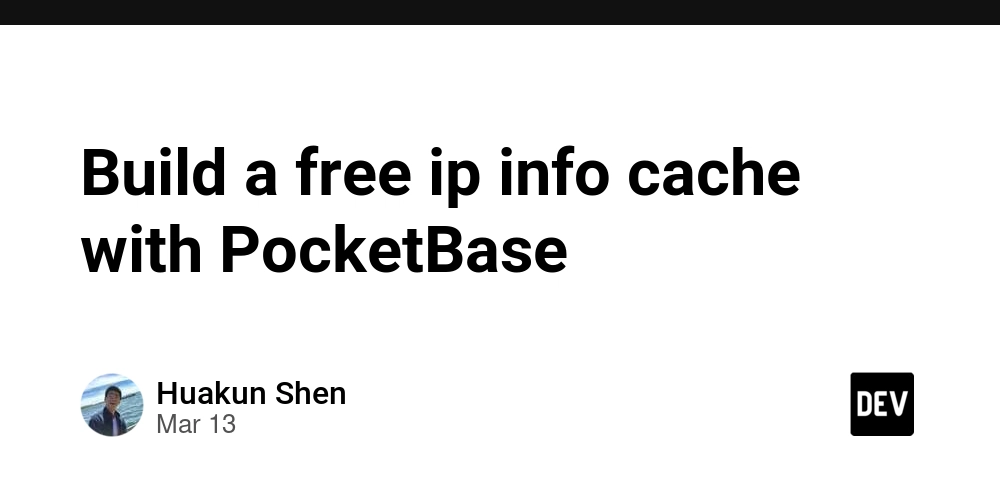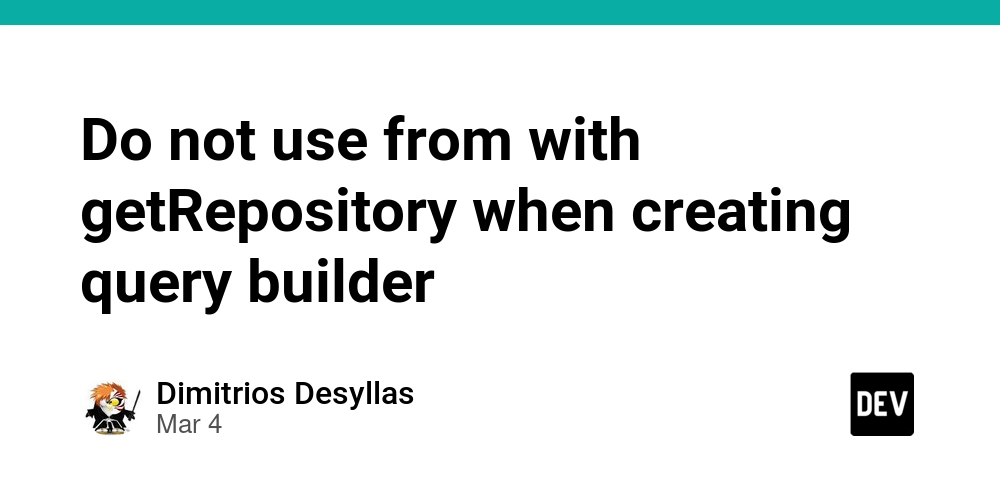Mastering Event-Driven Architecture: When and Why to Use It ⚡
Event-Driven Architecture (EDA) has gained significant traction, especially in systems requiring real-time processing and scalability. While designing our export service, I experienced firsthand the benefits of event-based communication. Instead of tightly coupled service calls, events enabled a highly scalable and decoupled system Despite its advantages, EDA comes with challenges like debugging complexities and eventual consistency. This article explores its fundamentals, why it matters, and when to choose it over other architectures. Introduction Event-Driven Architecture (EDA) is a software design pattern where components communicate asynchronously by producing and consuming events. Instead of direct service calls, systems react to events (e.g., user actions, state changes) via an event bus or message broker. In this article, we'll cover: Core concepts of Event-Driven Architecture Benefits of using EDA over traditional architectures Role of microservices in EDA Key challenges and trade-offs Implementation patterns and anti-patterns How to decide when to use EDA Understanding Event-Driven Architecture EDA revolves around events, which are immutable records of something that has occurred in a system. Unlike traditional request-response patterns, EDA creates a reactive system where services respond to events without direct dependencies. Core Components of EDA Event Producers – Generate events when something happens (e.g., "OrderPlaced", "UserSignedUp"). Event Consumers – Listen for and process specific events. Event Broker (Message Bus) – Middleware like Kafka, RabbitMQ, AWS SNS/SQS, or BullMQ that routes events from producers to consumers. Event Store (Optional) – Stores event history for auditing and replaying past events. Key Event Patterns in EDA Event Notification – Simple notifications that something has happened. Consumers must query additional information if needed. // Example event notification { "type": "UserSignedUp", "userId": "12345", "timestamp": "2025-03-01T14:23:45Z" } Event-Carried State Transfer – Events contain all necessary data, eliminating the need for additional queries. // Example event with complete state { "type": "UserSignedUp", "userId": "12345", "timestamp": "2025-03-01T14:23:45Z", "userData": { "email": "user@example.com", "name": "John Doe", "plan": "premium" } } Event Sourcing – Storing all state changes as a sequence of events, allowing system state reconstruction from the event log. [ {"type": "AccountCreated", "accountId": "ACC123", "balance": 0, "timestamp": "..."}, {"type": "MoneyDeposited", "accountId": "ACC123", "amount": 100, "timestamp": "..."}, {"type": "MoneyWithdrawn", "accountId": "ACC123", "amount": 50, "timestamp": "..."} ] // Current balance can be calculated: 0 + 100 - 50 = 50 Command Query Responsibility Segregation (CQRS) – Separating write operations (commands) from read operations (queries), often used with Event Sourcing. Essential Event Characteristics Immutability – Events are facts that have already occurred and cannot be changed. Atomicity – Events represent atomic operations that either happen completely or not at all. Uniqueness – Each event has a unique identifier to prevent duplicate processing. Ordering – Events often have a temporal order that must be preserved for correct processing. Idempotence – Processing the same event multiple times should yield the same result. Example: Ad Export Service Workflow
Event-Driven Architecture (EDA) has gained significant traction, especially in systems requiring real-time processing and scalability. While designing our export service, I experienced firsthand the benefits of event-based communication. Instead of tightly coupled service calls, events enabled a highly scalable and decoupled system
Despite its advantages, EDA comes with challenges like debugging complexities and eventual consistency. This article explores its fundamentals, why it matters, and when to choose it over other architectures.
Introduction
Event-Driven Architecture (EDA) is a software design pattern where components communicate asynchronously by producing and consuming events. Instead of direct service calls, systems react to events (e.g., user actions, state changes) via an event bus or message broker.
In this article, we'll cover:
- Core concepts of Event-Driven Architecture
- Benefits of using EDA over traditional architectures
- Role of microservices in EDA
- Key challenges and trade-offs
- Implementation patterns and anti-patterns
- How to decide when to use EDA
Understanding Event-Driven Architecture
EDA revolves around events, which are immutable records of something that has occurred in a system. Unlike traditional request-response patterns, EDA creates a reactive system where services respond to events without direct dependencies.
Core Components of EDA
- Event Producers – Generate events when something happens (e.g., "OrderPlaced", "UserSignedUp").
- Event Consumers – Listen for and process specific events.
- Event Broker (Message Bus) – Middleware like Kafka, RabbitMQ, AWS SNS/SQS, or BullMQ that routes events from producers to consumers.
- Event Store (Optional) – Stores event history for auditing and replaying past events.
Key Event Patterns in EDA
- Event Notification – Simple notifications that something has happened. Consumers must query additional information if needed.
// Example event notification
{
"type": "UserSignedUp",
"userId": "12345",
"timestamp": "2025-03-01T14:23:45Z"
}
- Event-Carried State Transfer – Events contain all necessary data, eliminating the need for additional queries.
// Example event with complete state
{
"type": "UserSignedUp",
"userId": "12345",
"timestamp": "2025-03-01T14:23:45Z",
"userData": {
"email": "user@example.com",
"name": "John Doe",
"plan": "premium"
}
}
- Event Sourcing – Storing all state changes as a sequence of events, allowing system state reconstruction from the event log.
[
{"type": "AccountCreated", "accountId": "ACC123", "balance": 0, "timestamp": "..."},
{"type": "MoneyDeposited", "accountId": "ACC123", "amount": 100, "timestamp": "..."},
{"type": "MoneyWithdrawn", "accountId": "ACC123", "amount": 50, "timestamp": "..."}
]
// Current balance can be calculated: 0 + 100 - 50 = 50
- Command Query Responsibility Segregation (CQRS) – Separating write operations (commands) from read operations (queries), often used with Event Sourcing.
Essential Event Characteristics
- Immutability – Events are facts that have already occurred and cannot be changed.
- Atomicity – Events represent atomic operations that either happen completely or not at all.
- Uniqueness – Each event has a unique identifier to prevent duplicate processing.
- Ordering – Events often have a temporal order that must be preserved for correct processing.
- Idempotence – Processing the same event multiple times should yield the same result.












































































































































































![[The AI Show Episode 142]: ChatGPT’s New Image Generator, Studio Ghibli Craze and Backlash, Gemini 2.5, OpenAI Academy, 4o Updates, Vibe Marketing & xAI Acquires X](https://www.marketingaiinstitute.com/hubfs/ep%20142%20cover.png)



























































































































![[DEALS] The Premium Learn to Code Certification Bundle (97% off) & Other Deals Up To 98% Off – Offers End Soon!](https://www.javacodegeeks.com/wp-content/uploads/2012/12/jcg-logo.jpg)


![From drop-out to software architect with Jason Lengstorf [Podcast #167]](https://cdn.hashnode.com/res/hashnode/image/upload/v1743796461357/f3d19cd7-e6f5-4d7c-8bfc-eb974bc8da68.png?#)









































































































.png?#)

































_Christophe_Coat_Alamy.jpg?#)
 (1).webp?#)




































































































![iPhone 17 Pro Won't Feature Two-Toned Back [Gurman]](https://www.iclarified.com/images/news/96944/96944/96944-640.jpg)
![Tariffs Threaten Apple's $999 iPhone Price Point in the U.S. [Gurman]](https://www.iclarified.com/images/news/96943/96943/96943-640.jpg)





































































































































